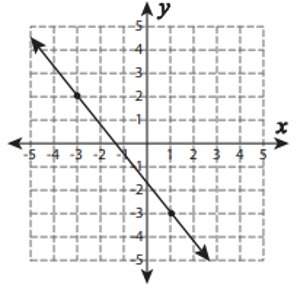
Mathematics, 29.06.2020 23:01 DoomydoomGir
On a coordinate plane, 3 triangles are shown. Triangle B C D has points (1, 4), (1, 2), (5, 3). Triangle B prime C prime D prime has points (negative 1, 4), (negative 1, 2), (negative 5, 3). Triangle B double-prime C double-prime D double-prime has points (5, negative 1), (5, negative 3), (1, negative 2). Which rule describes the composition of transformations that maps ΔBCD to ΔB"C"D"? Translation of 5 units x, negative 6 units y composition reflection across y = negative x Reflection across y = negative x composition translation of 5 units x, negative 6 units y. Translation of 6 units x, negative 5 units y composition reflection across the y-axis Reflection across the y-axis composition translation of 6 units x, negative 5 units y Reflection across the x-axis composition translation of negative 6 units x, 1 unit y. Translation of negative 6 units x, 1 unit y composition reflection across the x-axis. 90 degree rotation about point 0 composition translation of negative 6 units x, 1 unit y. Translation of negative 6 units x, 1 unit y composition 90 degree rotation about point 0.

Answers: 1


Another question on Mathematics

Mathematics, 21.06.2019 16:00
Successful implementation of a new system is based on three independent modules. module 1 works properly with probability 0.96. for modules 2 and 3, these probabilities equal 0.95 and 0.90. compute the probability that at least one of these three modules fails to work properly.
Answers: 2

Mathematics, 21.06.2019 18:00
John read the first 114 pages of a novel, which was 3 pages less than 1/3 of the novel. write an equation to determine the total number of pages (p)(p) in the novel.
Answers: 1

Mathematics, 21.06.2019 18:40
Juliana says that she can use the patterns of equivalent ratios in the multiplication table below to write an infinite number of ratios that are equivalent to 6: 10. which statement explains whether juliana is correct? she is correct because she can multiply 6 and 10 by any number to form an equivalent ratio. she is correct because 6: 10 can be written as 1: 2 and there are an infinite number of ratios for 1: 2. she is not correct because the multiplication table does not include multiples of 10. she is not correct because 6: 10 is equivalent to 3: 5 and there are only 9 ratios in the multiplication table that are equivalent to 3: 5.
Answers: 1

Mathematics, 21.06.2019 20:30
Can someone me with #s 8, 9, and 11. with just one of the three also works. prove using only trig identities.
Answers: 3
You know the right answer?
On a coordinate plane, 3 triangles are shown. Triangle B C D has points (1, 4), (1, 2), (5, 3). Tria...
Questions

Mathematics, 13.01.2021 18:30

Physics, 13.01.2021 18:30

Health, 13.01.2021 18:30

Business, 13.01.2021 18:30


Mathematics, 13.01.2021 18:30

Mathematics, 13.01.2021 18:30

Mathematics, 13.01.2021 18:30


Mathematics, 13.01.2021 18:30





Mathematics, 13.01.2021 18:30

Mathematics, 13.01.2021 18:30

Computers and Technology, 13.01.2021 18:30







